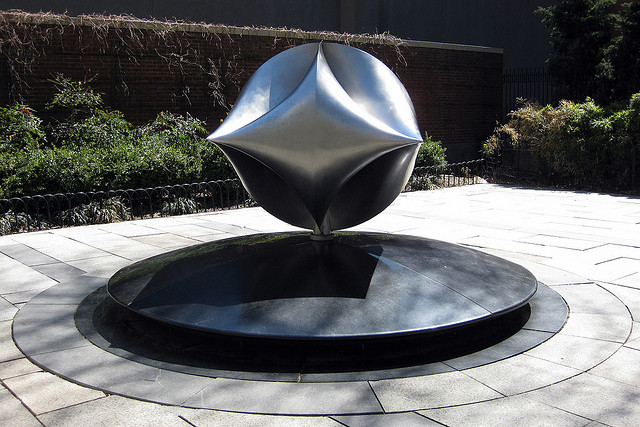4. American Museum of Natural History
 The time capsule at the American Museum of Natural History. Image via Flickr user Wally Gobetz
The time capsule at the American Museum of Natural History. Image via Flickr user Wally Gobetz
In January 1999, editors of The New York Times Magazine launched a contest whose winner would have his work on display for a millennium. Forty-eight designers, architects and engineers from around the world were asked to submit proposals. In March of the same year, proposals from ten finalists were put on display as part of an exhibition at the American Museum of Natural History called ”Capturing Time: The New York Times Capsule.” Of those ten finalists, the winning design was a 5′ x 5′ x 5′ sculpture of welded stainless steel created by Spanish architect-engineer Santiago Calatrava. Calatrava most famously designed another important New York structure, the Oculus, a transportation hub and retail center at the site of the World Trade Center. Santiago’s design is on permanent display at the museum’s plaza on Columbus Avenue.
The creation of the “Times Capsule” coincided with the publication of NYT Magazine’s final millennium issue, which is sealed within Santiago’s sculpture along with the five other millennium issues. In order to ensure the preservation of the magazines, they are sealed within the sculpture in two formats. One copy of the magazines is a boxed set of reproductions printed on archival acid-free paper and the second is made up of a series of microscopic images etched into a two-inch, wafer-thin metal HD-Rosetta data disc. Also found within Calatrava’s steel encasement are samples of popular music and a five minute sound portrait of New York that was recorded at 9:09 a.m. on 9/9/99. The capsule is set to be opened in the year 3000.





